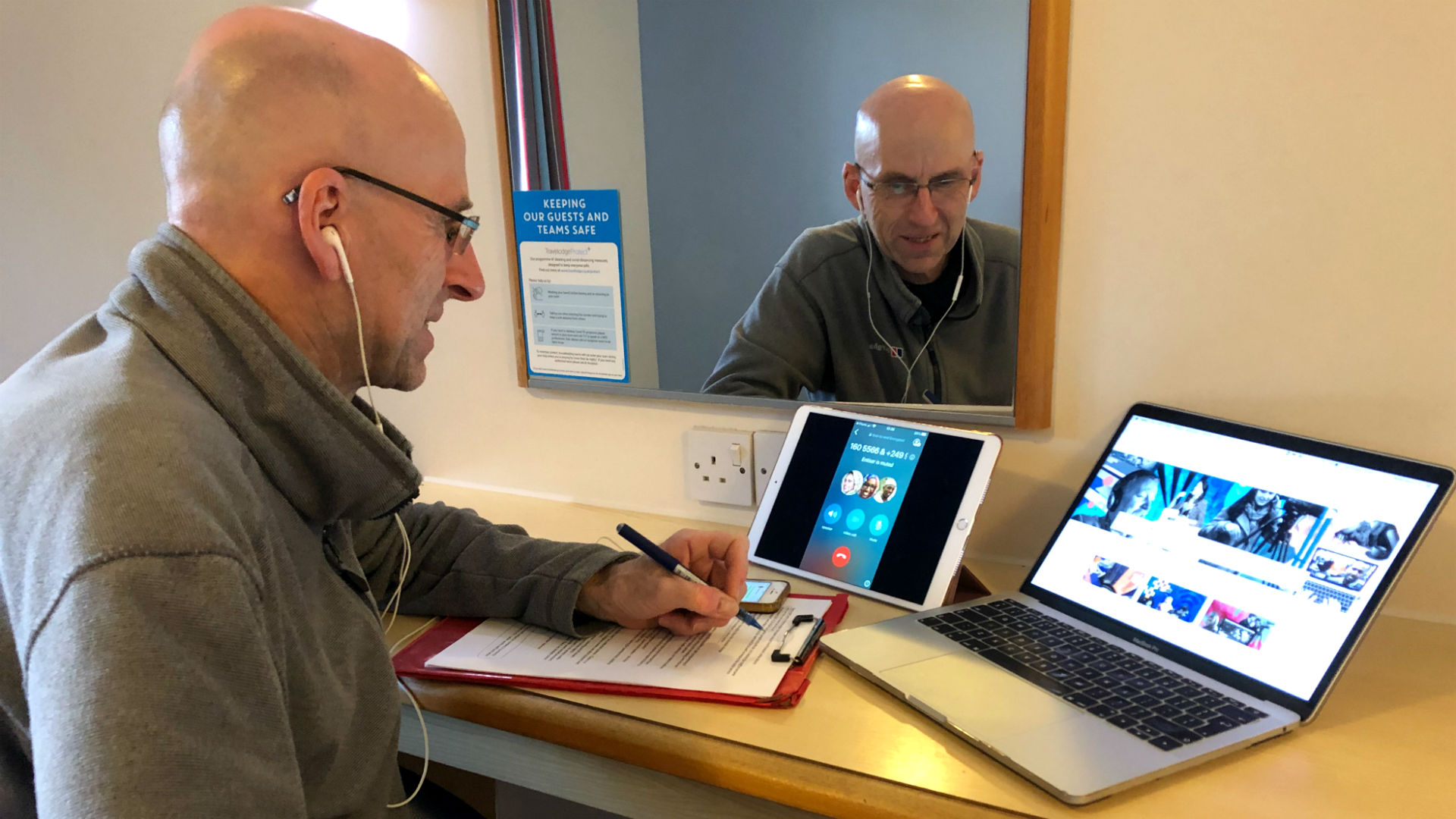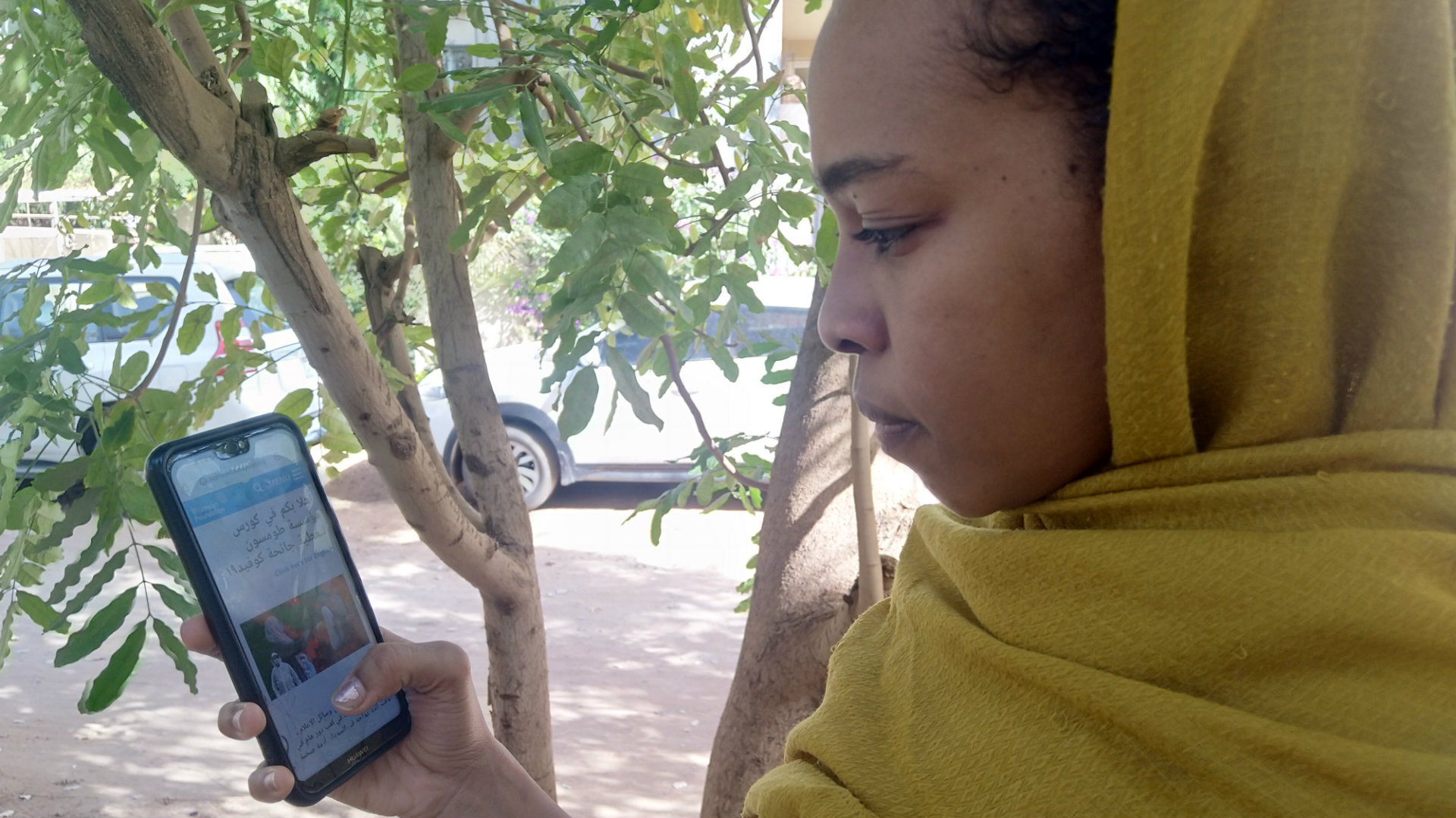You’re in a queue. How likely is it that you’ll check your messages on your mobile phone? Even the least digital amongst us is spending 30 minutes a day on messaging apps. Having our learning content on these platforms puts it intimately within reach of our users in a place where they are already looking and know how to interact with.
Offering a WhatsApp learning option in Sudan ensured that our course enrolments exceeded our expectations with the messaging app bringing an additional 1800 users to our COVID – 19 coverage course, three times more than the combined web and app offerings. Through WhatsApp, the course went viral amongst the Sudanese journalist community attracting participants from the diaspora with many sharing their certificates in their groups.
Results
-
82% User engagement
-
72% Completion rate
The medium's limitations are its main attraction
The first hurdle to creating a course using messages is to work out how to deliver the necessary mix of short and long form videos, demos, exercises and whatever else you would judge to be necessary for a meaningful learning experience in such a small format. The immediate temptation is to use messages as a conduit to other platforms linking to content sitting on websites like videos and articles away from the messaging platform.
For our Sudanese audience, we opted instead to concentrate on the messages but not as a passive experience. We focused on meaningful questions so that the course was a conversation in which users discovered what they knew and what they needed to know interactively through question and answer.
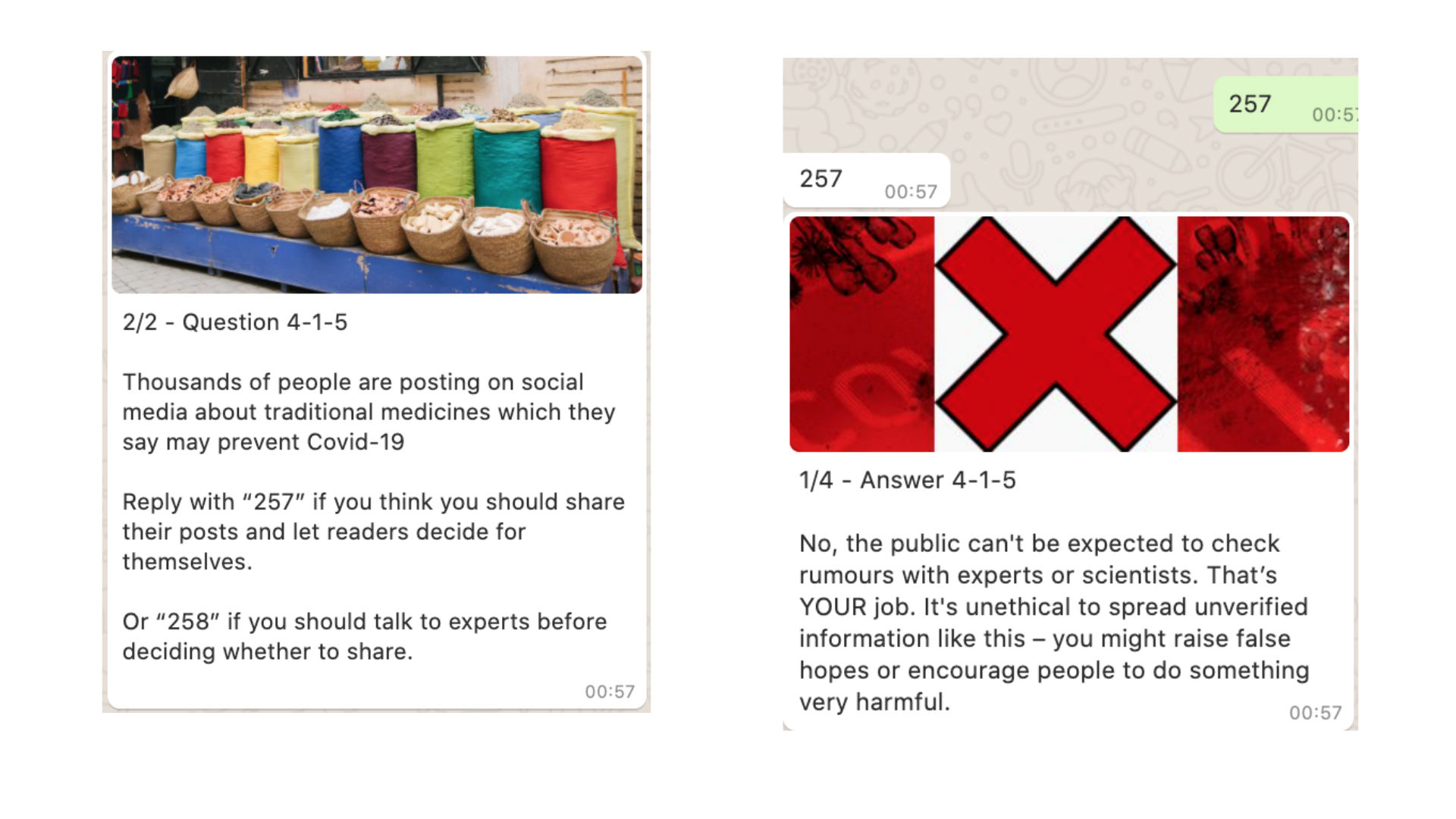
The questions were often scenarios that emulated where key learning outcomes could manifest themselves. If you got the answer wrong or right we explained why and the thinking behind it.
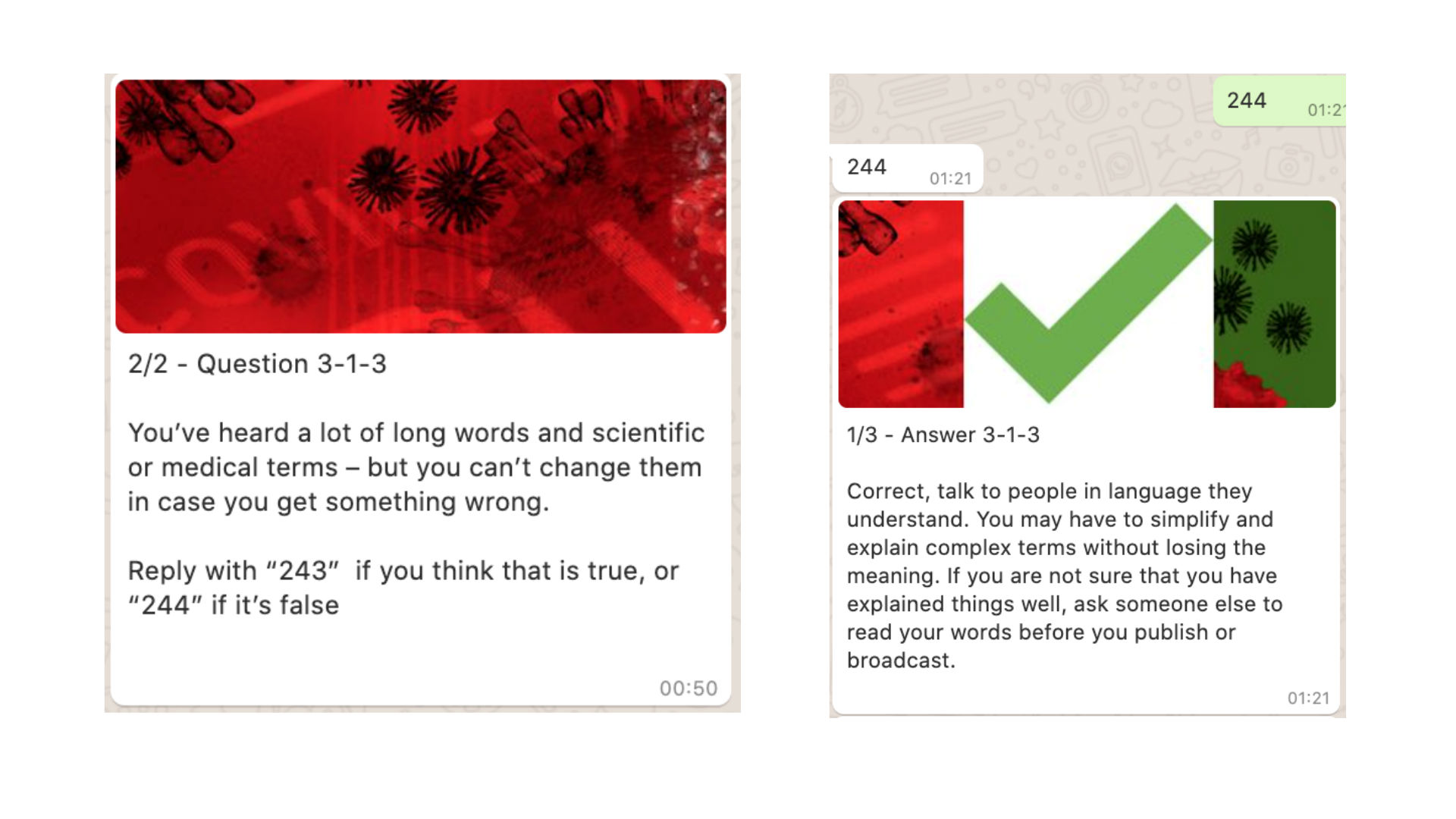
Results
Like most of our courses, from the moment you start, you are drawn into short interactive exercises and this worked particularly well in a messaging format resulting in 82% user engagement and a 72% completion rate, the highest we have achieved with a course that is open to the public.
The course still included testimonials and case studies, a video from the Sudanese government and links. But a large effort was made to strip the content down to what was essential. If something could be taken out without compromising the learning, it was. This ensured we could meet the required rigour and depth and added variety and colour to the user experience.
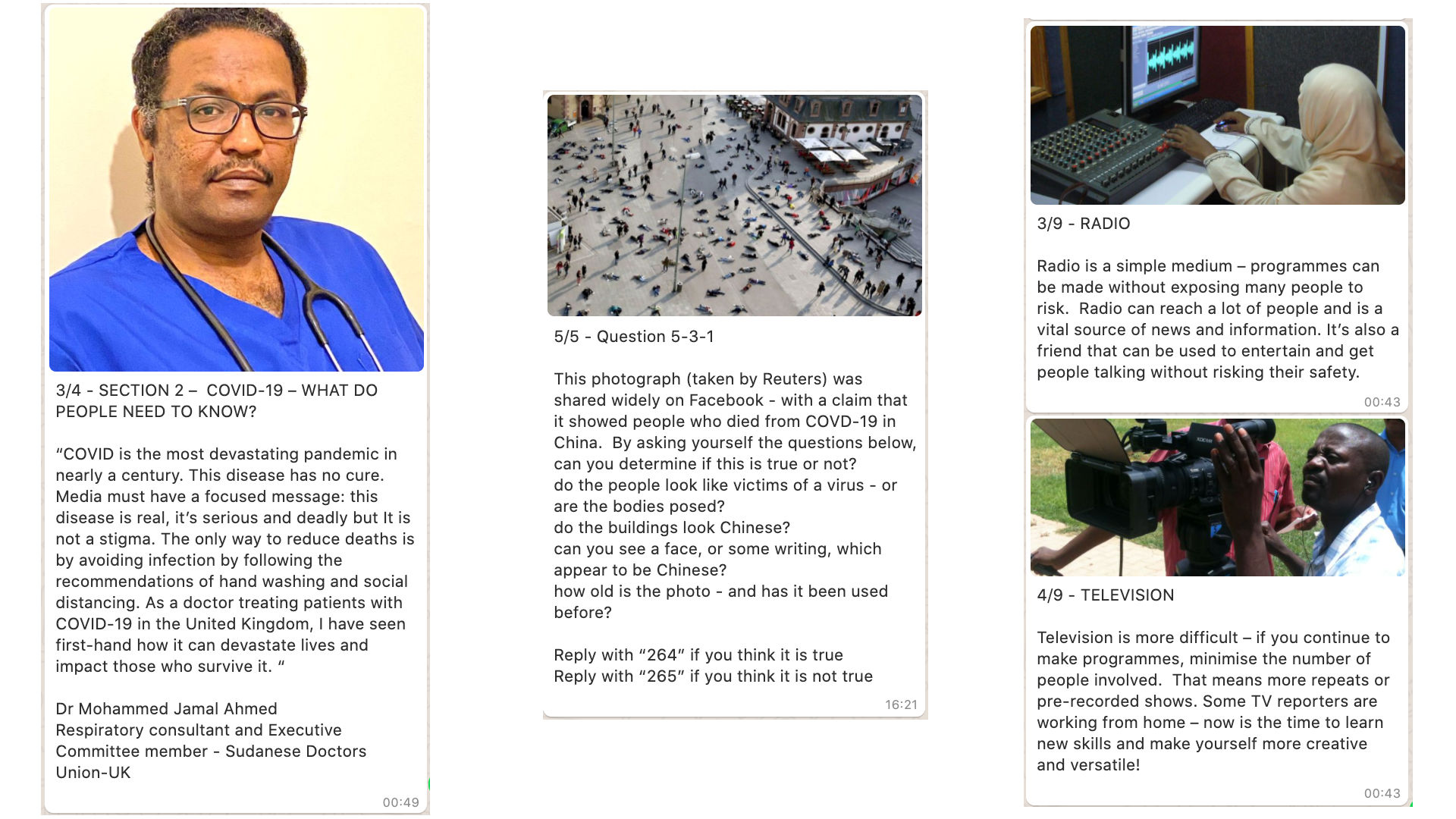
Hacking the system
An additional hurdle for us was that the platform we used for this course (Arist) offered specific templates that did not allow us to produce such a long series of interactive exercises in one course and in a self-paced format. To get around this, we created 162 mini courses, each acting like a page or unit, and asked Arist to thread them through their number-based course recalling system. We are grateful for their support.
The impact on storytelling and accuracy
When we surveyed the users three months after launch, the response rate was higher than average: 99% of the 150 respondents confirmed that the course had changed the way they work and 73% the stories they were producing. Fifty-six per cent cited a greater focus on accuracy and fact verification as the most important change.
The future
As with any platform, it is the use case that will dictate whether WhatsApp, Facebook Messenger, or SMS is the most appropriate medium. Is the course standalone or part of a wider online package? Can we use WhatsApp or Facebook groups? What is the function of the WhatsApp element? Our latest use case has pushed us to explore Telegram. It will be intriguing to discover whether this new platform confirm messaging to be such an effective tool as our experience so far suggests.
